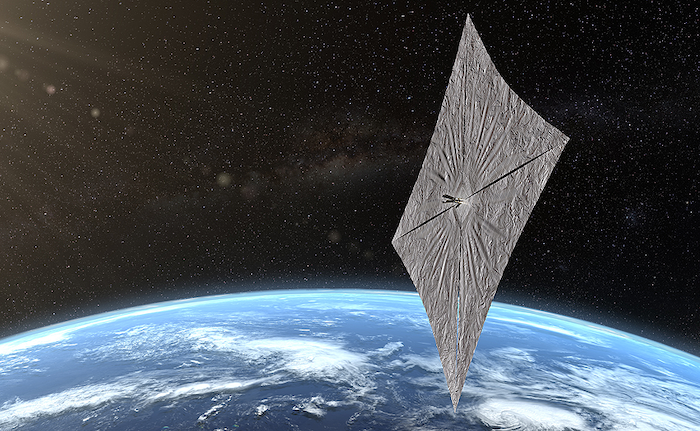A spacecraft called IKAROS, created by Japanese scientists and equipped with a unique development — the world’s first solar sail, does not compare with recently developed similar technology. The new technology is called ESAIL. It was developed by the Finnish Meteorological Institute with full funding from the European Union. The implementation of such technology will make it possible to create the world’s fastest spacecraft that makes interplanetary flights. Thanks to him, it will be possible to reach the orbit of the planet Pluto in just five years..
Like an ordinary solar sail, ESAIL is also able to move only by using the energy of the Sun, so that the spacecraft does not need any engine or fuel. However, unlike the Japanese IKAROS, which reflects photons from solar energy, ESAIL, thanks to a new more massive webbed antenna, is able to reflect protons.
The ESAIL sail is constructed from thin metal rods that are able to unfold into a circular antenna around the ship when it is in outer space. By using a solar-powered electric generator on board the spacecraft, a high electrical positive potential will be maintained at the sail antenna. Since the proton of sunlight has a positive potential, then when it collides with the sail, it will be repelled by its electric field and thereby transfer the impulse to the spacecraft.
All the available technologies that are capable of implementing and deploying electric sails have long been known to scientists and tested over years of testing. Naturally, a large number of new technologies and modifications of old ones will have to be developed, and it is also necessary to test the new technology in outer space, and for this you need to launch a small prototype sail. It is for these purposes that the European Union allocated about two million and three hundred thousand US dollars for this project. If all goes well, then a person will receive the first space engine in history, which is capable of accelerating an interplanetary spacecraft to speeds of thirty kilometers per second. However, while these are just theoretical assumptions, everything will be known after the first experimental launch..






